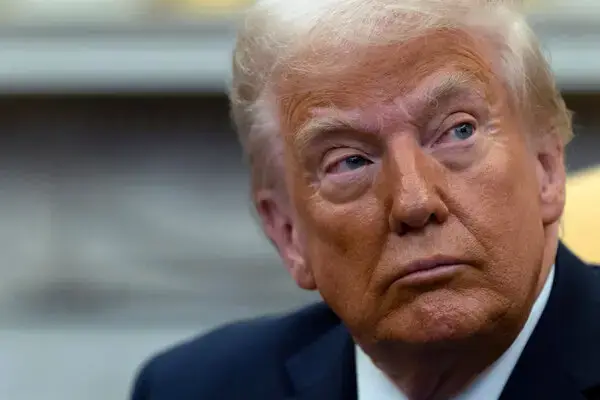On a humid Monday morning in Washington, D.C., the Supreme Court, in a terse, unsigned order, lit a fuse under one of the federal government’s most symbolic departments: the U.S. Department of Education.
Without a full hearing, without oral arguments, the Court’s conservative majority granted President Donald Trump the authority to move forward with mass layoffs at the department—a decision that could reshape the landscape of American education for a generation.
The ruling immediately lifted a lower court’s injunction that had blocked the terminations, greenlighting a reduction-in-force plan that will eliminate over 1,400 federal jobs by the end of this week.
Supporters called it a return to state sovereignty in education. Critics warned of chaos, deep inequities, and a potential dismantling of federal safeguards for millions of vulnerable students.
But the message from the high court was clear: the president has the power to reshape his own executive branch—even if the consequences ripple across every school district in America.
The Backstory: Trump’s War on “Federal Bloat”
Since his re-election, President Trump has made no secret of his intent to radically downsize the federal government. Nowhere was this more apparent than in his revived push to abolish or hollow out the Department of Education, long a target of conservative ire.
At campaign rallies, Trump labeled the agency a “bloated bureaucracy” and a “liberal indoctrination cartel.” His second-term Secretary of Education, Linda McMahon—a political outsider with business credentials but no background in public education—was tasked with doing what no cabinet secretary had done before: make the department functionally obsolete.
The plan? Cut the workforce by half. Reassign dozens of functions to states. Eliminate what the administration called “duplicative oversight” and “federal micromanagement.” And eventually, shrink the department down to a regulatory skeleton.
But in April, the first wave of layoffs was stopped dead in its tracks.
⚖️ The Legal Challenge: Teachers’ Unions and Judicial Roadblocks
The order to terminate 1,400 Education Department employees was met with swift opposition.
Several lawsuits were filed by teachers’ unions, education rights groups, and even civil rights organizations. They argued that federal education programs—especially those addressing disability accommodations, Title IX gender equity, and school desegregation enforcement—couldn’t legally function with so few personnel.
Judge Myong Joun, a Biden appointee to the U.S. District Court in Massachusetts, agreed. He issued a temporary injunction blocking the layoffs, stating that the Trump administration could not make such drastic staffing decisions without Congressional input.
“The Department of Education is not a private corporation that can downsize for efficiency,” Joun wrote in his ruling. “It is a constitutional actor with congressionally mandated responsibilities.”
When the administration appealed, the 1st U.S. Circuit Court of Appeals upheld Joun’s decision in June, setting the stage for a showdown at the Supreme Court.
⚖️ The Supreme Court Steps In
On Monday, July 29, the Court responded with an emergency ruling. The injunction was paused. The Trump administration, once again, had the green light to fire the employees—not eventually, but immediately.
There was no hearing, no argument, no fanfare. Just a short order, citing a previous emergency ruling from May in which the Court had similarly allowed Trump to fire members of independent federal agencies.
The implication was unmistakable: The President controls the Executive Branch. Period.
Within hours of the decision, termination notices went out.
One email obtained by CNN read:
“This RIF [Reduction In Force] action is not a reflection upon your performance or conduct and is solely due to agency restructuring, as described in previous correspondence.”
The effective date: August 1.
The Dissent: Justice Sotomayor Sounds the Alarm
Not everyone on the bench agreed.
In a scathing dissent, Justice Sonia Sotomayor—joined by Justices Kagan and Jackson—warned that the Court was opening a dangerous door.
She called the ruling “indefensible” and accused the majority of ignoring the very real and immediate harm to vulnerable students.
“Rather than wait for legislative action to begin shuttering the Department,” she wrote, “Secretary McMahon slashed the agency’s work force in half, concededly without analyzing the effect of those terminations on the Department’s statutorily mandated functions.”
She cited likely impacts on programs that serve students with disabilities, low-income communities, and victims of sexual harassment in schools. Civil rights enforcement, in particular, she argued, would be crippled.
“This ruling unleashes untold harm,” she concluded.
The Political Stakes: Bureaucracy or Bedrock?
The ruling instantly reignited debate over the role of the federal government in education—a fight that has raged since the department’s creation in 1979.
For Trump supporters, it was a long-overdue correction.
“We are getting rid of useless Washington red tape,” Trump said in a Truth Social post after the ruling. “This is a MAJOR VICTORY for Parents, Teachers, and Students.”
He added:
“Education belongs in the hands of STATES, not unelected federal bureaucrats pushing DEI and critical race theory nonsense.”
Secretary McMahon echoed that sentiment in a press release.
“We will carry out this reduction in force to promote efficiency and accountability and to ensure resources are directed where they matter most — to students, parents, and teachers.”
But for civil rights groups, the move was a frontal assault on decades of federal guarantees.
“Federal oversight has protected marginalized students for generations,” said Malika Grant, legal director for the National Center for Education Justice. “You can’t just rip that up and say ‘good luck, states.’ That’s not how equity works.”
️ What Comes Next: Education in the States’ Hands
The administration insists it will fulfill all statutory duties, even with fewer staff. But insiders are skeptical.
According to internal memos leaked to The Washington Post, several federal education offices—including the Office for Civil Rights and the Office of Special Education Programs—will see drastic reductions, with some functions offloaded to state governments that may lack the resources or political will to enforce federal standards.
Already, at least seven Republican-led states have formally requested waivers from federal oversight of Title IX investigations and special education compliance, citing “new flexibility” under the Trump administration.
Critics warn this could lead to a patchwork of education rights enforcement, where a student’s access to fair treatment depends on their zip code.
The Human Toll: 1,400 Lives Disrupted
Beyond the headlines, the layoffs are affecting real people—career public servants, many with decades of experience.
“We were told we’d be protected,” said Angela Rivera, a civil rights investigator with the department for 18 years. “Now we’re just gone. Like we don’t matter.”
Some former staffers say they were working on critical investigations when their access to government systems was suddenly revoked Monday afternoon.
“I was building a Title VI racial discrimination case involving multiple districts,” said another laid-off employee. “Now I’m locked out. Who picks that up? Who helps that student?”
The administration has declined to answer how ongoing investigations will be handled.
A Broader Legal Trend: The Court, the Presidency, and Executive Power
The ruling is the latest in a series of decisions in which the Supreme Court has expanded presidential authority over federal agencies—reversing decades of judicial skepticism toward executive overreach.
In May, the Court similarly upheld Trump’s decision to fire officials at independent agencies, including the National Labor Relations Board and the Consumer Product Safety Commission.
Legal scholars say the trend is unmistakable.
“The Court is dismantling the post-Watergate vision of constrained executive power,” said Prof. Linda Hecht, a constitutional law expert at Georgetown University. “They’re handing the White House the keys.”
Critics fear this creates a precedent that any president—not just Trump—can gut agencies by simply removing personnel, rather than going through the deliberative legislative process required by law.
“This isn’t about education alone,” Hecht warned. “This is about the architecture of government.”
The Numbers: What’s Left of the Department?
After the layoffs, the Department of Education will retain fewer than 2,000 employees nationwide, the lowest since its inception.
Dozens of positions in compliance monitoring, grants management, and civil rights enforcement have been eliminated.
While states will now receive increased flexibility and expanded block grants, it remains to be seen whether they can replicate the functions previously handled at the federal level.
️ The Political Wildcard: Will This Help or Hurt Trump?
Polls show that education remains a top-tier issue for suburban voters, especially women. While Trump’s message of parental control and state authority resonates with his base, the layoffs could alienate voters in swing districts who rely on federal education support.
“Republicans better be careful,” said one GOP strategist who requested anonymity. “This could backfire if it starts looking like kids are being thrown under the bus for politics.”
Democrats, meanwhile, are preparing to run on the issue in November.
“Trump is gutting education to fund tax cuts for billionaires,” said Rep. Ayanna Pressley, D-Mass. “That’s not just cruel—it’s un-American.”
The Final Word: The Quiet Revolution
While Monday’s Supreme Court decision may have come with little fanfare, its impact will be far from quiet. It signals the beginning of a broader transformation in how America educates its children—and who decides what that education looks like.
With federal oversight retreating and presidential power expanding, the future of American education is being rewritten in real time.
The question now is simple: Who gets to hold the pen?

Ethan Blake is a skilled Creative Content Specialist with a talent for crafting engaging and thought-provoking narratives. With a strong background in storytelling and digital content creation, Ethan brings a unique perspective to his role at TheArchivists, where he curates and produces captivating content for a global audience.
Ethan holds a degree in Communications from Zurich University, where he developed his expertise in storytelling, media strategy, and audience engagement. Known for his ability to blend creativity with analytical precision, he excels at creating content that not only entertains but also connects deeply with readers.
At TheArchivists, Ethan specializes in uncovering compelling stories that reflect a wide range of human experiences. His work is celebrated for its authenticity, creativity, and ability to spark meaningful conversations, earning him recognition among peers and readers alike.
Passionate about the art of storytelling, Ethan enjoys exploring themes of culture, history, and personal growth, aiming to inspire and inform with every piece he creates. Dedicated to making a lasting impact, Ethan continues to push boundaries in the ever-evolving world of digital content.
